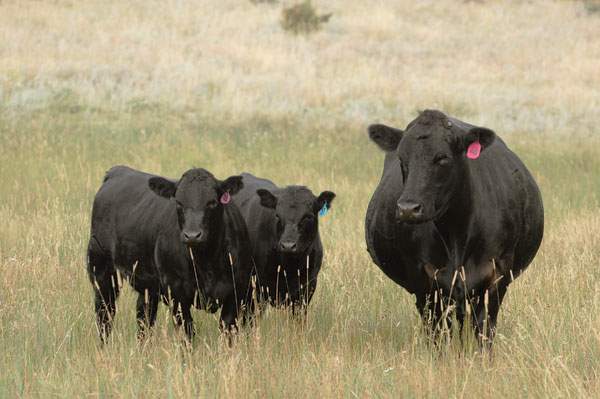Traditions, whether they involve family at the holidays or managing a ranch, are great. But sometimes, you have to break from tradition when considering ranch profitability.
December 5, 2019

With the holiday season upon us, family traditions tend to be the center of most people’s thinking. Likewise, in the beef industry, tradition in the way we raise, feed, and market cattle can become commonplace.
But what if you threw out tradition and dared to be different? Could you run multiple species? Should you summer calve? What about custom grazing or feeding?
As the New Year—a traditional time for setting new goals—approaches, perhaps a few unconventional ideas from Hay Springs, Neb. rancher Vern Terrell and his family may help spur different strategies for your own cattle enterprise.
Speaking at the 2019 Range Beef Cow Symposium in Mitchell, Neb., Terrell told attendees that finding ways to curb costs and be competitive are the primary tenets that drive the decisions for their western Nebraska operation. Here are six of those tactics:
Operate primarily on leased land. With about one-third of land costs going back to property taxes in Nebraska, the Terrell family has aimed to reduce their tax burden by leasing land. But they still treat it like they own it.
“We are passionate about our grass,” Terrell says, and notes that they invest in their leased acres by cross-fencing, adding water developments, and planting cover crops to graze on cropland.
Buy replacement cows. Heifers – and even three to four-year-old cows – are viewed by Terrell as a higher-cost investment to get bred and successfully produce a calf. He says having young cows usually also means having another herd to manage separately.
So instead, they focus on buying older, low-dollar cows to keep herd numbers – and calf production – up. Terrell says, “We follow the droughts. That’s where we buy a lot of cows.” In fact, they’ve purchased from 11 states in the last six years.
He adds, “It seems to work, they adjust. We like to buy cows from a higher stress area than our area.” Terrell’s ultimate is a crossbred cow, which he says lasts longer in the herd. All cows are bred to Charolais bulls for a terminal cross.
Turn bulls over annually. A Charolais bull battery is used for one breeding season at the Terrell ranch and then sold to a Texas buyer who pays nearly the same price that the bulls were initially purchased for. Terrell does keep a few bulls around for fall breeding, but he says, “It’s one of our economic advantages to not have bulls year-round.”
Change your calving season. The Terrell’s have turned a traditional calving and breeding season on its ear. Their summer herd begins calving May 15 through July 15, with anything calving after that run in their fall herd. For breeding season, bulls are left in for 100 days because Terrell says, “We’d rather have a late calving cow than an open cow.” Cows that do turn up open are typically identified in July, which tends to match with a robust cull cow market at that time.
Find ways to maximize livestock. Weaning calves at 100 to 130 days has also given the Terrell’s several advantages. Their calves tend to have fewer health issues and they’ve found they can run more cows because they don’t have a 500-pound calf eating grass. Terrell says, “We are all about cow numbers.”
To that end, in 2012 they also began running 800 ewes to complement their cowherd. Terrell explains, “You can run a ewe for every cow and not require more range because they graze different species.” He equates the revenue generated from the sheep being equivalent to running an extra 150 cows.
Offer custom services. Adding a custom grow yard and custom grazing have helped the Terrell family utilize their forage and feed to generate extra revenue. To expand grazing opportunities, they also transitioned an irrigated field into a dedicated pasture planted with a forage mix.
These additions were the result of looking at their resources from a different mindset, and when they did, Terrell says they realized, “We’re in a great location to get calves weaned and started.”
Kindra Gordon is a freelance ag writer from Whitewood, S.D.
You May Also Like

.png?width=300&auto=webp&quality=80&disable=upscale)
.png?width=300&auto=webp&quality=80&disable=upscale)
